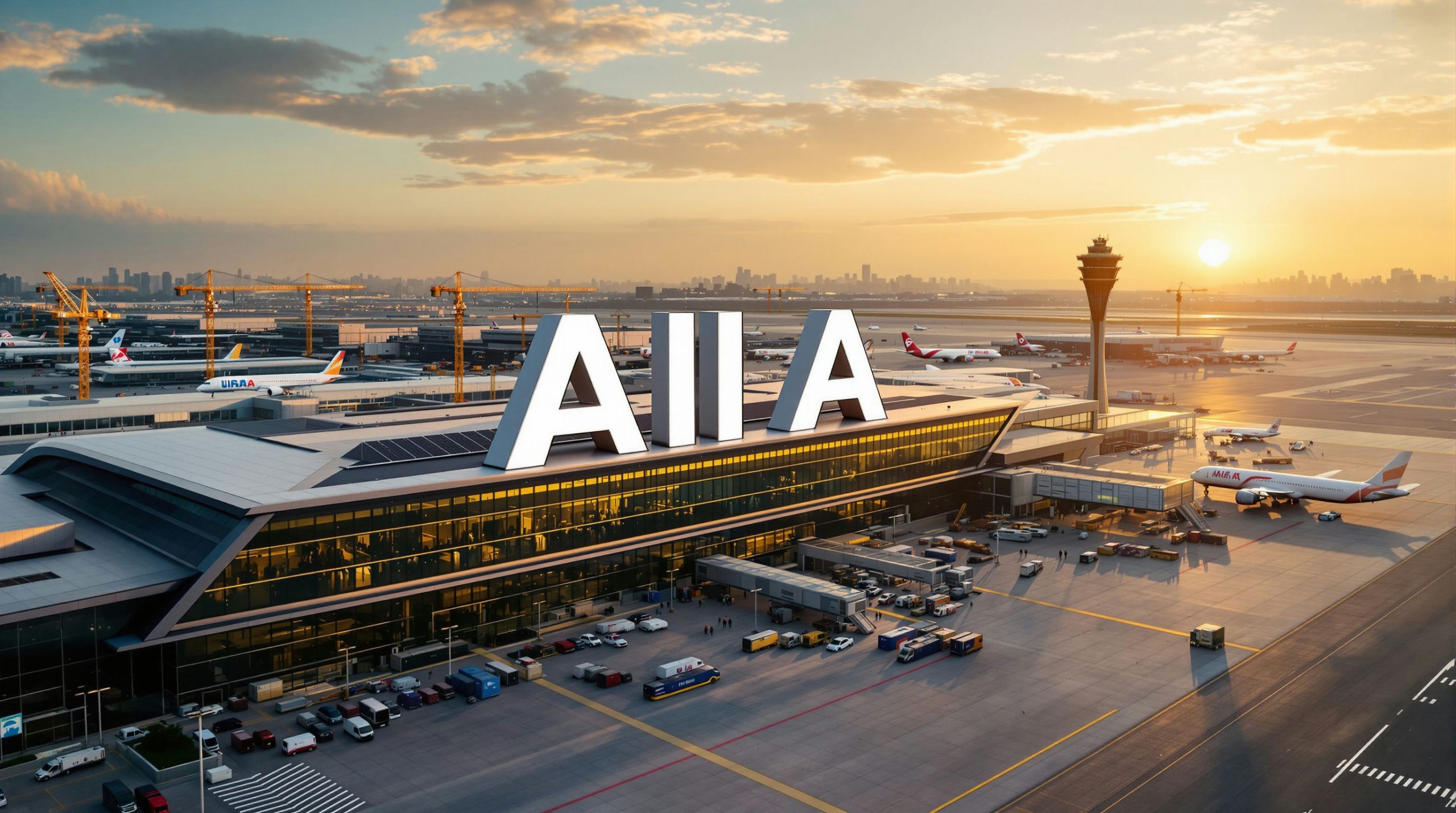Auckland Airport Limited has achieved a decisive regulatory victory after the Commerce Commission formally rejected Air New Zealand’s request for a section 56G inquiry into airport regulation. This Auckland Airport regulation inquiry rejection provides crucial certainty for the company’s ambitious $5.7 billion infrastructure investment programme, reinforcing its position as New Zealand’s critical infrastructure gateway.
The Commerce Commission’s targeted assessment determined that a formal inquiry was unnecessary and would risk leading to greater costs for the sector. This decision validates Auckland Airport’s substantial capital investment plans through 2032 whilst maintaining the current regulatory framework that supports essential infrastructure development.
What Does the Auckland Airport Regulation Inquiry Rejection Mean for Investors?
The Commerce Commission’s rejection of Air New Zealand’s inquiry request represents more than just a regulatory win—it provides essential investment certainty for one of New Zealand’s largest infrastructure projects. Chief Executive Carrie Hurihanganui emphasised that the ruling “provides ongoing regulatory certainty for investors” and confirms that “the current regime is working for consumers.”
Key announcement highlights:
- Commerce Commission rules out formal regulatory inquiry following “sprint project” assessment
- $5.7 billion aeronautical infrastructure programme continues with regulatory support
- Government reconfirms no changes to Part 4 of Commerce Act currently being considered
- Information disclosure requirements review to proceed in 2026
This decision is particularly significant for infrastructure investors seeking stable, regulated returns from essential assets with monopolistic characteristics. Furthermore, the regulatory endorsement reinforces Auckland Airport’s defensive investment proposition whilst supporting its substantial growth trajectory.
How Significant is Auckland Airport’s $5.7 Billion Infrastructure Programme?
Auckland Airport’s decade-long capital investment represents one of New Zealand’s most substantial infrastructure undertakings, designed to transform the country’s primary international gateway. The programme currently employs over 1,500 people working on-site and has received specific validation from regulators.
Infrastructure Investment Overview:
| Component | Details |
|---|---|
| Total Investment | $5.7 billion (2023-2032) |
| Current Workforce | 1,500+ people employed on-site |
| Focus Areas | Capacity expansion, operational resilience, customer experience |
| Regulatory Status | Confirmed as reasonable and fit for purpose |
| Beneficiaries | All airlines and airport users |
Programme Benefits:
- Essential capacity additions for New Zealand’s primary aviation gateway
- Enhanced operational resilience against service disruptions
- Improved customer experience across all airport facilities
- Significant job creation with substantial on-site employment
- Universal benefits for all airline customers and airport users
The Commerce Commission’s March 2025 pricing report specifically validated these investment plans as “sound: reasonable, fit for purpose, and in the best interests of consumers.” This regulatory endorsement provides crucial validation for the programme’s scope and economic rationale, particularly following the Auckland Airport regulation inquiry rejection.
Why Did the Commerce Commission Reject the Airport Regulation Inquiry?
The Commission’s rejection reflects a comprehensive evaluation of New Zealand’s airport regulatory framework effectiveness. Following Air New Zealand’s July 2025 request for a section 56G inquiry, the Commission conducted a “sprint project” assessment that found existing oversight mechanisms are functioning appropriately.
Commission’s Key Findings:
- Current regulatory regime is working effectively for consumers
- Formal inquiry would risk creating additional sector costs without clear benefits
- Existing information disclosure requirements provide adequate oversight
- No evidence that regulatory changes would improve consumer outcomes
Air New Zealand’s Speculative Approach:
Chief Executive Hurihanganui criticised the airline’s methodology, stating their “claims about the cost of future infrastructure are speculative” and based on “conjecture” about Auckland Airport’s draft master plan extending to 2047. She emphasised that the master plan represents a long-term vision dependent on actual demand, not a confirmed construction programme.
“It’s a shame Air New Zealand is using our good faith consultation under the new legislation to push for regulatory change before that consultation has even been completed.” – Carrie Hurihanganui, CEO
However, this Auckland Airport regulation inquiry rejection demonstrates the Commission’s confidence in the current regulatory framework’s effectiveness.
What Makes the Current Regulatory Framework Effective?
The existing regulatory structure provides balanced oversight that protects consumer interests whilst enabling essential infrastructure investment. The Commerce Commission’s assessment validated this approach through comprehensive analysis of sector performance and stakeholder outcomes.
Framework Strengths:
- Transparent pricing oversight through information disclosure requirements
- Regular regulatory assessment of capital investment programmes
- Balanced stakeholder representation across airlines and consumers
- Predictable regulatory environment supporting long-term investment planning
In addition, the framework has successfully facilitated substantial infrastructure investment whilst maintaining reasonable cost increases for airport users.
What Are Auckland Airport’s Current Pricing Arrangements?
Auckland Airport’s regulated pricing structure demonstrates the balance between funding necessary infrastructure investment and maintaining reasonable cost increases for airlines and passengers. The current pricing arrangements reflect extensive consultation and regulatory oversight.
Pricing Impact Analysis (2023-2027):
| Metric | Amount |
|---|---|
| Average Annual Increase | $1.26 per passenger domestic jet charges |
| Pricing Period | 2023-2027 |
| Regulatory Assessment | Confirmed as fair and reasonable |
| Investment Benefit | All airport users including 27 airline customers |
This modest annual increase enables substantial infrastructure improvements whilst maintaining cost-effectiveness for all stakeholders. The pricing structure has received specific regulatory validation, with the Commerce Commission confirming the arrangements serve consumer interests effectively.
Stakeholder Engagement:
Auckland Airport maintains continuous engagement with 27 airline customers through formal pricing processes and ongoing dialogue. Management acknowledges that “differences of opinion on proposed investment” are normal features of regulated airport environments globally, reflecting the balance between airline short-term priorities and long-term consumer interests.
How Will Future Information Disclosure Requirements Change?
Whilst delivering the Auckland Airport regulation inquiry rejection, the Commerce Commission will proceed with reviewing information disclosure requirements for major airport investment in 2026, following Ministry of Business, Innovation and Employment (MBIE) recommendations completed in July 2025.
Upcoming Regulatory Process:
- Information disclosure review scheduled for 2026
- Enhanced transparency requirements for major capital investments expected
- No legislative changes to Part 4 of Commerce Act currently planned by Government
- MBIE confirmation that no legislative change to airport regulation is required
Government Policy Position:
The Government has reconfirmed this week that no legislative change to Part 4 is being considered at this time and will not be included in upcoming Commerce Act amendments. This position remains unchanged from communications following the MBIE consultation process completion.
Industry Implications:
The information disclosure review represents a balanced approach to regulatory oversight—providing enhanced transparency without fundamental changes to the existing framework. This approach maintains investment certainty whilst addressing stakeholder calls for improved visibility of major capital investment decisions.
Will Enhanced Disclosure Requirements Impact Investment Plans?
Auckland Airport welcomes constructive regulatory oversight and remains committed to working with the Commission through the information disclosure review process. Management emphasises that enhanced transparency requirements align with the company’s commitment to stakeholder engagement and regulatory compliance.
Expected Outcomes:
- Improved visibility of major capital investment decision-making processes
- Enhanced stakeholder understanding of infrastructure investment rationale
- Maintained investment certainty through stable regulatory framework
- Balanced approach protecting both consumer interests and infrastructure development needs
Nevertheless, the review represents evolution rather than revolution in regulatory oversight, supporting continued infrastructure investment whilst addressing transparency concerns.
What Makes Auckland Airport a Compelling Infrastructure Investment?
Auckland Airport’s regulatory victory reinforces its position as a defensive infrastructure asset with substantial growth potential, supported by stable regulatory oversight and essential service characteristics.
Investment Proposition Strengths:
| Factor | Significance |
|---|---|
| Regulatory Certainty | Stable framework confirmed, supports long-term planning |
| Strategic Asset Position | New Zealand’s primary international aviation gateway |
| Growth Investment Scale | $5.7 billion programme expanding national capacity |
| Government Policy Support | No plans for regulatory framework changes |
| Economic Validation | Commission confirms investment approach is sound |
Competitive Advantages:
- Essential infrastructure status provides defensive investment characteristics
- Regulated return framework offers predictable income stream visibility
- Monopolistic gateway position for New Zealand’s international connectivity
- Capacity expansion positioned for post-pandemic aviation demand recovery
- Balanced stakeholder management across 27 airline customer relationships
Risk Mitigation Factors:
- Regulatory framework stability confirmed by Government policy
- Infrastructure investment plans validated by independent Commission assessment
- Diversified airline customer base reduces concentration risk
- Essential service characteristics provide demand resilience
The Auckland Airport regulation inquiry rejection particularly strengthens the investment case by confirming regulatory stability and validating the company’s strategic approach to infrastructure development.
Why Should Investors Monitor Auckland Airport’s Development Progress?
Auckland Airport represents a unique combination
Want more ASX news?
Investors seeking timely insights into high-potential infrastructure and exploration opportunities can leverage StockWireX’s proprietary Discovery IQ model, which delivers real-time alerts on significant ASX mineral discoveries and related market developments. Subscribers receive actionable notifications that enable rapid, informed decisions across commodities and infrastructure sectors. Begin your 30-day free trial today to gain a market-leading advantage with StockWireX’s expert-driven alerts.











